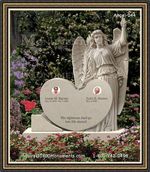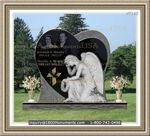|
Formalities To Know At A Jewish Funeral
Certain rituals are normally performed at a Jewish funeral. These rituals vary, mainly depending on which community the deceased is from and the person who is officiating the wedding. Some officials are quite strict in observing that all rituals are performed as required, while others are flexible. The customs carried out aim at showing respect to the deceased as well as the mourners.
Burial is normally carried out within a day when a person dies. The burial may be postponed for another day or two, so as to wait for any close family member who has to travel from a far place to attend the burial. It's totally up to the family to decide whether the burial should be postponed or whether it should go ahead as required by custom.
The casket is normally kept sealed at the memorial service. It is generally considered rude to look at someone who cannot look back at you. A plain and simple coffin is used. The coffin should be made from wood only as not metal parts are allowed, as metal does not decompose.
Preservation of the body through embalming is not allowed, unless demanded by local laws for health reasons. This is to allow the body to decompose naturally. If the family wishes, they can call a pious society of men and women who have devoted themselves to the task of cleaning and dressing dead bodies as required by tradition.
The burial ceremony does not take a long time. It can be completed in less than half an hour. Flowers are normally considered as frivolous adornments, so they are often avoided at burials. If you wish, you can choose to have a small floral tribute, as long as the officiant is not opposed to it. Mourners cannot talk to the attendees until the whole burial ceremony is over.
When leaving the graveside, attendees at a Jewish funeral form a double line facing each other. The mourners pass in the middle and receive consolation messages from others. Any kind words of comfort are offered at this time. Mourners may symbolically wash their hands before leaving the cemetery as a sign of cleansing.
|
|



























